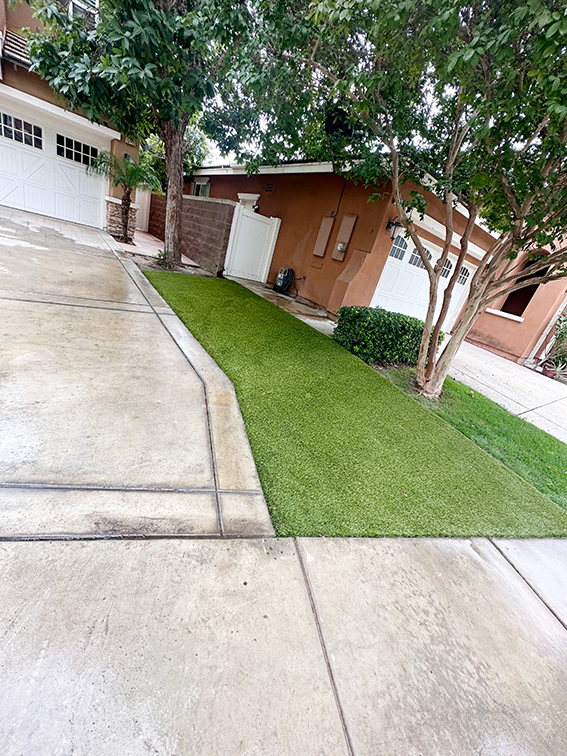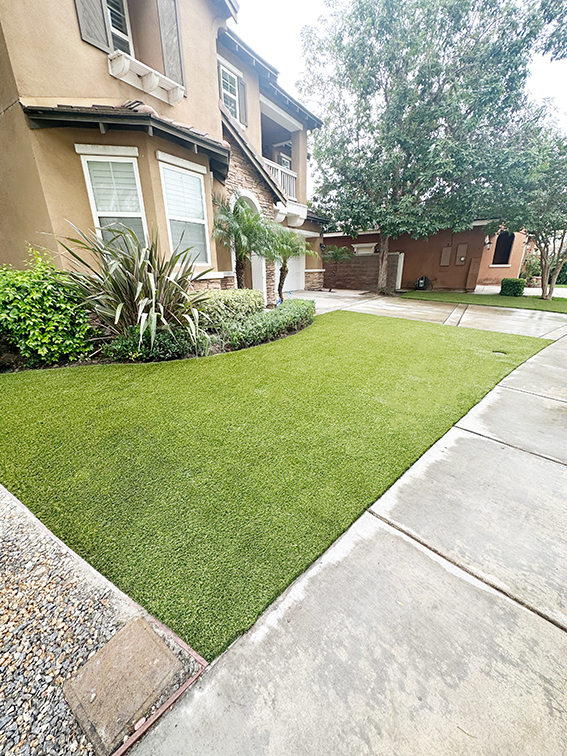Landscaping with artificial turf in California is a popular choice due to the state’s climate and water conservation efforts. Here’s a step-by-step guide to landscape with artificial turf in California:

Check Local Regulations:
Before starting your project, familiarize yourself with any local or municipal regulations regarding the use and installation of artificial turf. Some areas may have specific guidelines or restrictions.

Design and Plan:
Create a landscaping plan that incorporates artificial turf, considering the layout, shapes, and patterns you want. Take into account the placement of turf areas, pathways, landscaping elements, and any other features.

Measure and Order Turf:
Measure the areas where you intend to install artificial turf to determine the amount of turf you need. Order the turf from a reliable supplier based on your measurements and requirements.
Prepare the Area:

Prepare the site by removing existing vegetation, rocks, debris, or any uneven surfaces. Level the ground and ensure proper drainage to prevent water accumulation.
Install Weed Barrier and Base Material:
Lay a weed barrier fabric to prevent weed growth. Add a base layer of crushed aggregate or decomposed granite (DG) and compact it thoroughly to create a stable, even surface.
Install Edging:
Place edging materials like bender boards or metal stakes around the perimeter of the turf area to define the space and keep the turf in place.
Lay and Trim the Turf:
Roll out the artificial turf and position it according to your design. Trim and shape the turf to fit the area accurately. Avoid stretching the turf excessively.
Secure and Join Turf Sections:
Secure the turf by nailing or stapling it along the edges and seams. Use appropriate joining materials to seamlessly connect multiple turf pieces.
Infill Material:
Apply infill material like silica sand or rubber granules (depending on the turf type) to enhance the turf’s durability, resilience, and natural appearance.
Brush and Fluff:
Use a power brush or broom to brush the turf fibers upright, giving it a more natural and attractive look.
Inspect and Adjust:
Inspect the entire installation to ensure it meets your expectations. Make any necessary adjustments or refinements.
Landscaping Integration:
Incorporate other landscaping elements like plants, trees, decorative rocks, or pavers to complement the artificial turf and enhance the overall aesthetic of your landscape.
Always follow best practices for artificial turf installation to ensure a successful and visually appealing landscaping project in California.
Tags
landscape with artificial turf Backyard Landscape backyard landscape design with artificial grass Elevating Landscapes Elevating Landscapes in San Diego Revolutionizing Landscapes